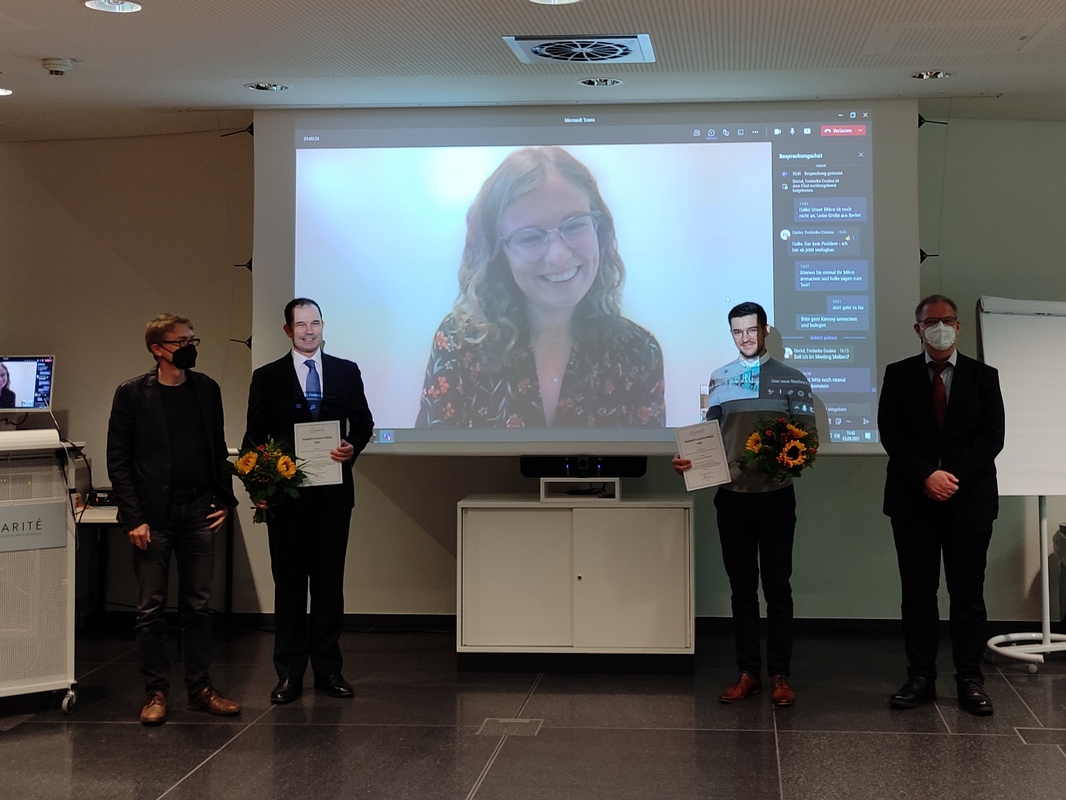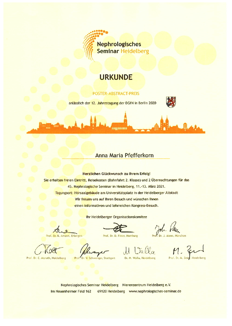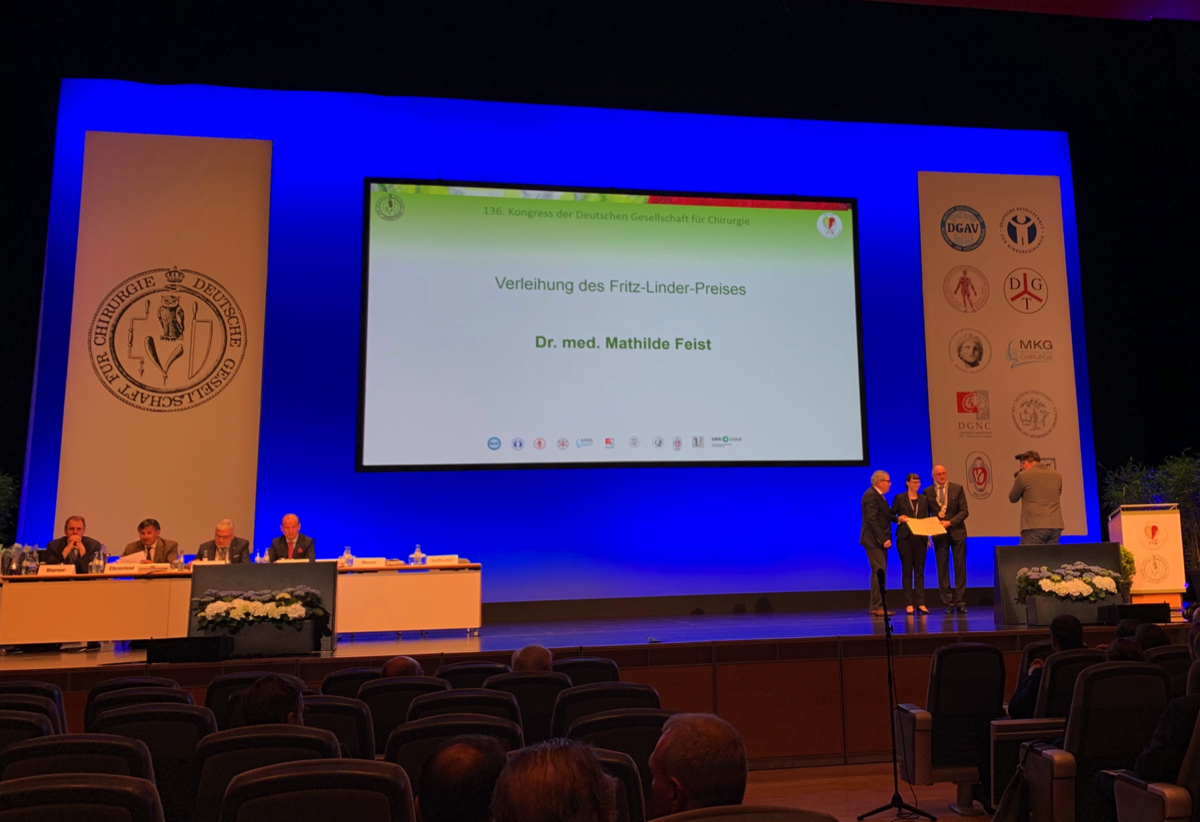Anna Pfefferkorn won the Best Poster prize for our work on "Molecular and cellular mechanisms of Lipocalin-2 mediated renoprotection in kidney transplantation" at the Kongress für Nephrologie 2020, held in Berlin 1.-4. October, 2020!
Lipocalin-2 (Lcn2) is distinctly upregulated in kidney transplants and serves as an early marker of AKI, DGF and acute rejection. However, the functional role and mechanisms underlying Lcn2 upregulation remain largely unknown. Using a mouse model of kidney transplantation we recently demonstrated a renoprotective role of recombinant Lcn2:Siderophore:Fe (rLcn2). However, the molecular and cellular events underlying the renoprotective effects of rLcn2 in kidney allografts remain unclear. Elucidating these events forms the primary focus of the current study.
rLcn2 significantly lowered CD8+ T cells in the allograft, LN and blood at POD 7, whereas their number remained unaffected in spleen. Nevertheless, the number of CD4+ T Lymphocytes was reduced only in lymph nodes. NKG2D+CD8+T cells and CD27+CD11b+NKp46+NK cells were the most prominent subpopulations of the cytotoxic lymphocytes whose frequencies were significantly reduced in graft, spleen and blood with the treatment of rLcn2. Besides, a significantly reduced infiltration of monocytes/macrophages was also observed at POD-7 with the said treatment. Importantly, degranulation capacity and IFNg production of intragraft and splenic CD4+ and CD8+ T cells were impaired in the treated animals. Besides, rLcn2 lowered hypoxia and reoxygenation induced cytotoxicity of the primary RTECs, associated with reduced caspase-3 cleavage and activation of Erk and AKt signaling.
rLcn2 treatments differentially affects the relative frequencies and activation of various immune cell. Besides, rLcn2 depicts cytoprotective effect on murine primary RTECs during H/R, possibly via activation of Erk and Akt signaling.
CONGRATULATIONS ! 



